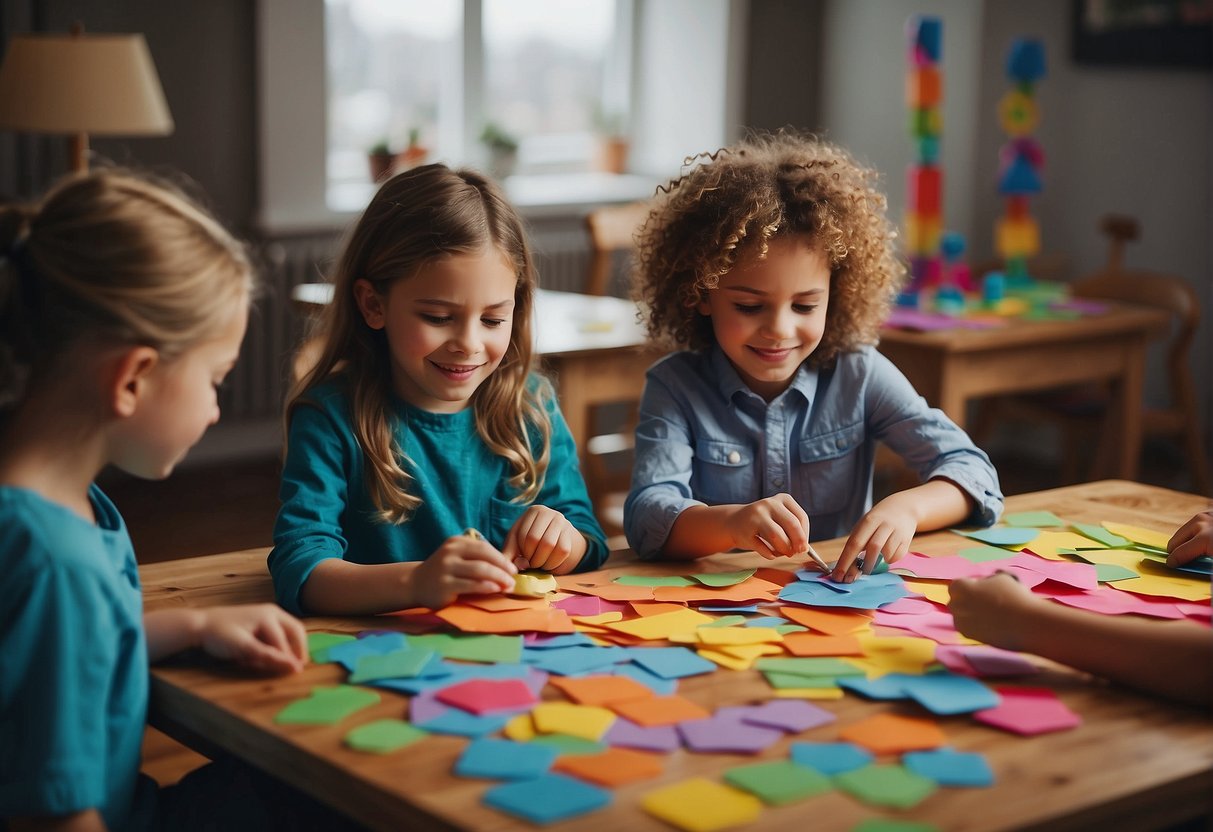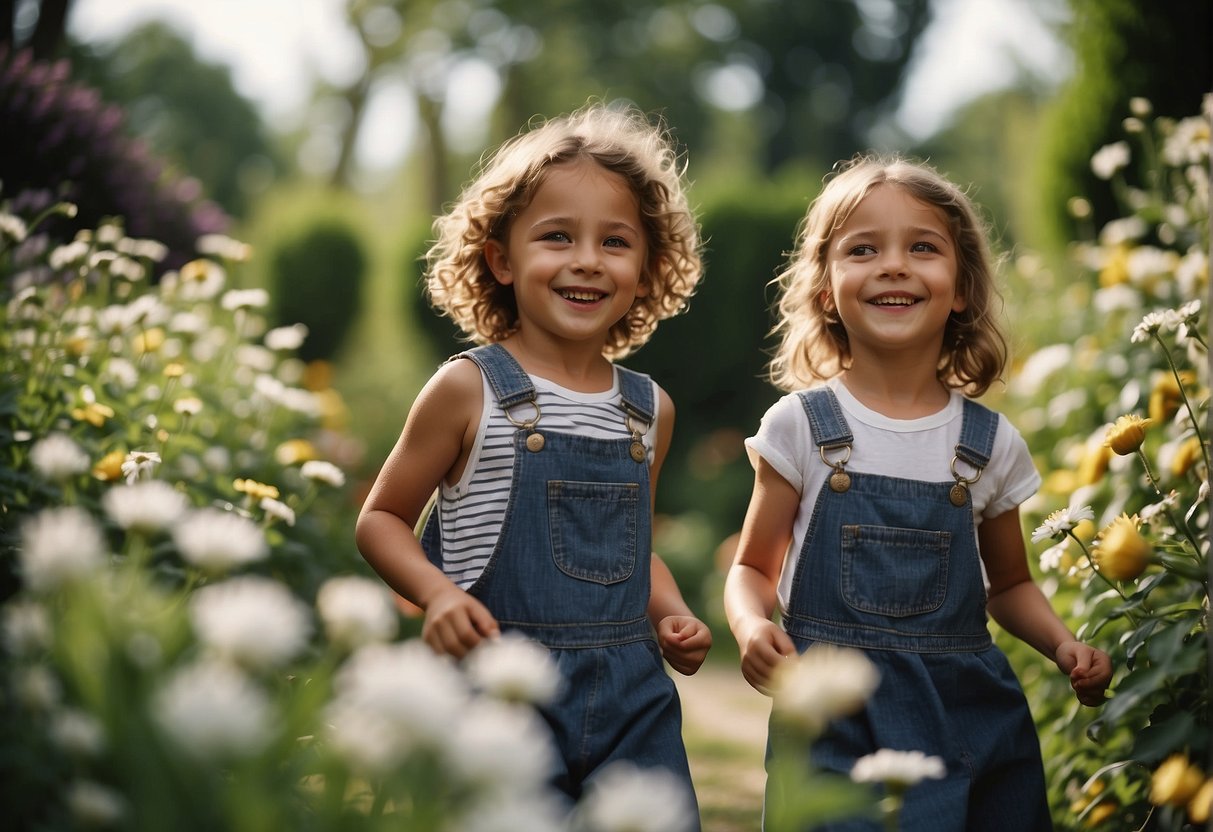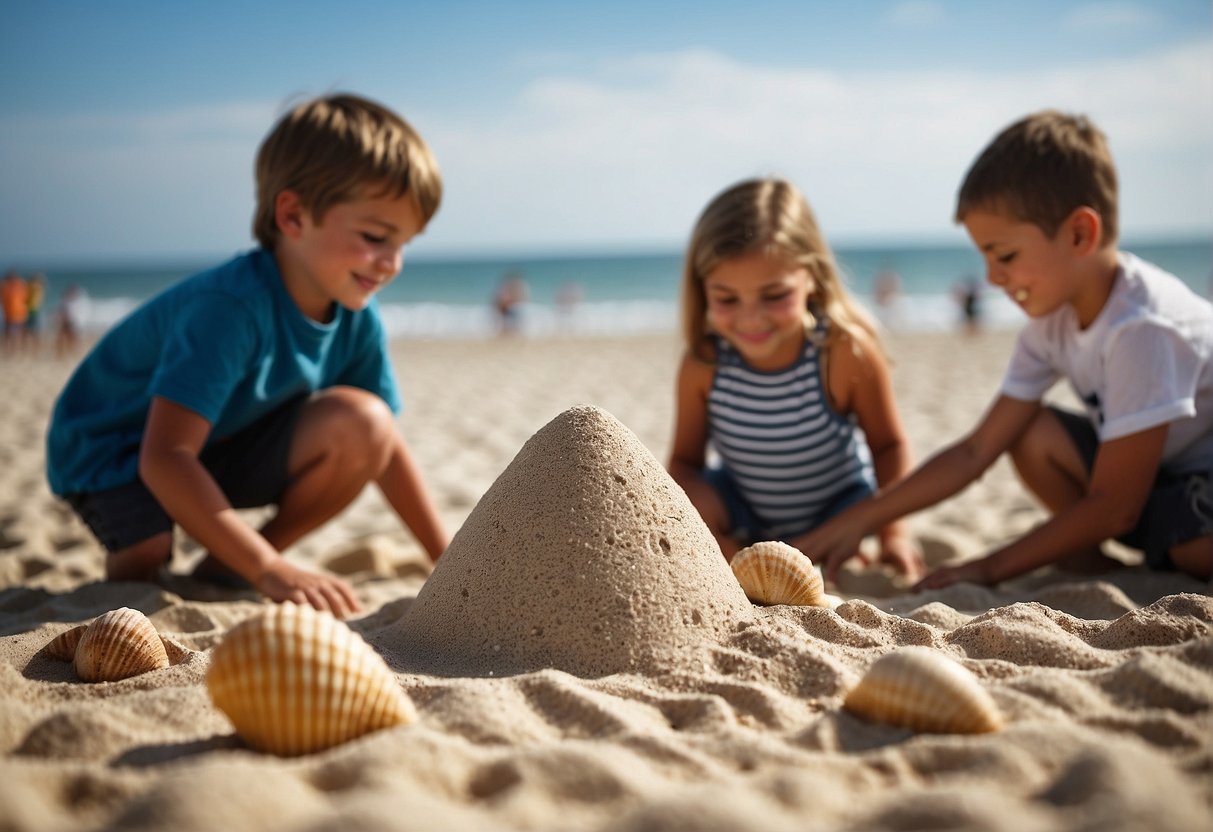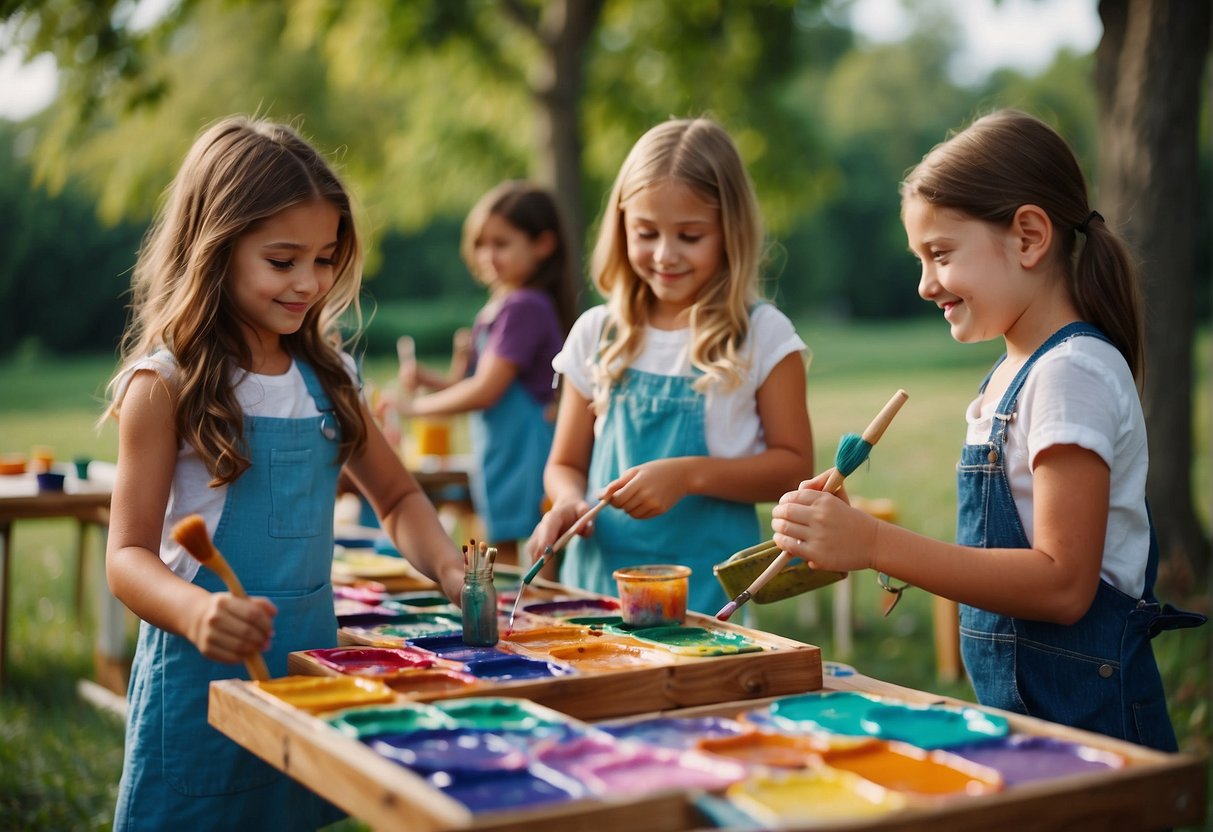Knitting can be a fun and rewarding activity for kids, offering a great way to develop fine motor skills and spark creativity. Whether it’s a rainy day project or a weekend hobby, knitting provides children with a sense of accomplishment as they create something tangible from yarn and needles.

This article will introduce nine easy knitting projects that are perfect for young beginners. The projects are designed to be simple and enjoyable, helping kids get started with basic knitting techniques while making items they can be proud of.
1) Friendship Bracelets
Friendship bracelets are a great knitting project for kids. They are fun and simple, making them perfect for beginners. The materials needed are basic: yarn, scissors, and beads. These items are easy to find and affordable.
To start, I cut seven strands of yarn, each about 30 cm long. I tie them in a knot at one end. Next, I make a small hole in a piece of cardboard to hold the knot in place. This keeps the yarn from slipping.
One of the easiest patterns is the basic square knot. I use two colors of yarn that are woven around a third. This pattern is often used in macramé but works well for friendship bracelets too. It’s simple and quick to make.
Another easy pattern is the skinny chevron. I use four strings for this design. The chevron pattern looks cool, and it doesn’t take long to complete. Kids love the bright and colorful outcome of this bracelet.
Friendship bracelets are a wonderful way for kids to practice their knitting skills. They boost creativity and make great gifts for friends. The variety of designs and colors available ensures that every project feels fresh and exciting.
2) Knitted Coasters

Knitting coasters is a perfect project for kids. Coasters are small, easy, and quick to make. They don’t require much material and help kids learn basic knitting skills.
I start by choosing a simple square design. This basic shape is straightforward and helps young knitters understand how to create a flat piece.
Using colorful yarns makes this project more fun. Kids can pick their favorite colors and create striped or two-toned patterns.
To knit a coaster, I cast on about 19 stitches using the longtail method. This cast-on is secure and simple for beginners. Then, I have the kids knit all rows to create a garter stitch fabric.
If the kids know how to purl, we can add more designs. For instance, we might do a simple border with knit stitches and use purl stitches in the center. This creates a nice texture.
Knitting coasters also teaches kids patience and attention to detail. They get to see a finished product quickly, boosting their confidence.
Once they finish knitting, I show them how to bind off the stitches and weave in any loose ends. Then, they have a useful item they made themselves.
3) Simple Scarves

When it comes to easy knitting projects for kids, simple scarves are a fantastic choice. They help children practice basic knitting techniques and provide a sense of accomplishment when finished.
I love the idea of scarves with an easy-breezy texture. These are great for beginners and add a bit of fun to the knitting process. Kids can choose their favorite colors and patterns to make the scarf unique.
Keyhole or button-down scarves are perfect for kids. They not only keep the scarf in place but also add an interesting twist to the design. These scarves can be secured easily, making them practical for active children.
Pom pom scarves are another favorite. They add a playful touch and are fun to make. Children can attach fluffy pom poms to the ends of their scarves, creating a cute and cozy accessory.
Garter stitch scarves are very beginner-friendly. This basic stitch is simple to learn and gives a neat, even texture. It’s a great way for kids to build their knitting confidence without getting overwhelmed.
Simple scarves are not just practical, but they also make wonderful gifts. As the weather gets colder, children will take pride in wearing scarves they’ve made themselves or giving them to friends and family.
4) Pom-Pom Hats

Pom-pom hats are a great project for kids. They are simple to make and look adorable. With just a few basic supplies, kids can create colorful hats that they’ll be excited to wear.
First, choose the right yarn. Medium-weight or worsted yarn works well. It’s not too thick, making it easier for kids to handle. You only need one skein for a hat, making it budget-friendly too.
Next, select your knitting needles. A size 8 or 5 mm circular knitting needle is ideal. Circular needles are easier for beginners because they can keep all the stitches in place.
To start, cast on the number of stitches needed for the hat size. This might be different depending on the pattern you choose. Some patterns suggest a ribbed edge for a snug fit.
Once you finish knitting the hat, it’s time to make the pom-pom. You can use a pom-pom maker or make one by hand. Wrap the yarn around your fingers, tie it in the middle, and cut the loops to create a fluffy pom-pom.
Finally, sew the pom-pom to the top of the hat. This is a fun step that lets kids add their personal touch. Each hat will look unique, showcasing their creativity.
5) Miniature Blankets

Miniature blankets are perfect projects for kids who are learning how to knit. These small-sized blankets can be used for dolls, stuffed animals, or even as decorative pieces.
When I make a miniature blanket, I usually choose light to medium-worsted weight yarn. This type of yarn works well for smaller projects.
Circular needles, usually size 9 or 10, are great for these projects. They help keep the stitches even and make it easier to manage the yarn.
Simple stitch patterns like garter stitch or stockinette stitch are ideal. They are easy to remember and result in a neat and cozy blanket. Plus, kids find these patterns fun to knit.
Miniature blankets also make great gifts. They are quick to knit and can be personalized with different colors or patterns. They are both practical and charming, making them a hit with kids and adults alike.
6) Animal Finger Puppets
Animal finger puppets are a fantastic and simple project for kids learning to knit. They are small, fun, and come in many varieties, making them perfect for keeping young hands busy.
I enjoy knitting these little creatures because they use minimal yarn and can be completed quickly. You can make a whole zoo with animals like crocodiles, elephants, frogs, and even tigers.
Knitting finger puppets is also great for teaching kids different knitting techniques without overwhelming them. They can experiment with colors and patterns while creating adorable toys they can play with or give as gifts.
Patterns for finger puppets usually require simple stitches. Kids can start with basic designs like mice or bunnies and gradually move to complex ones like bears and rabbits.
Most patterns recommend using DK (8-ply) yarn. You can easily use leftover yarn from other projects. This makes the project both economical and eco-friendly.
The joy of making and playing with these finger puppets is immense. They bring storytime to life and can spark a child’s imagination. Plus, they’re portable, so kids can take their knitting anywhere.
7) Colorful Dishcloths
One of the easiest and most fun projects I recommend for kids is knitting colorful dishcloths. These small items are quick to make and require only a little yarn. Plus, they are practical and can be used around the house, making them a great introduction to knitting.
Kids can choose from a variety of bright and bold colors to make their dishcloths stand out. Variegated yarns are especially fun, as they create interesting patterns as you knit. Solid colors can be just as beautiful and allow for experimenting with different stitches and textures.
The patterns for dishcloths are usually simple. Beginners can use the basic garter stitch, while more advanced young knitters might try seed stitch or simple lace patterns. This flexibility means kids can start with what feels comfortable and gradually take on more challenges.
Dishcloths are a great way for kids to see their progress quickly. The small size of the project lets them finish in a short time, giving a sense of accomplishment. Whether they are making gifts or helping out at home, these colorful dishcloths are a perfect knitting project for kids.
8) Baby Booties
One of my favorite easy knitting projects for kids is baby booties. They are small, quick to make, and always appreciated as gifts. Kids can learn basic stitches while creating something useful.
There are many simple patterns available. Some even come with cute details like buttons or straps that keep the booties snug on a baby’s feet.
For beginners, I recommend patterns that knit flat on two needles. More advanced knitters can try patterns knit in the round. Both ways create adorable, tiny shoes that bring joy to any new parent.
The materials needed are basic: soft yarn and two needles. This project helps kids practice knitting techniques without feeling overwhelmed. Even mistakes can be easily fixed due to the small size of the booties.
Kids love seeing their work transform into something so delightful and practical. Plus, they can try different colors and designs, boosting their creativity. From classic styles to modern twists, baby booties can be as simple or as intricate as they want to make them.
This project is perfect for teaching kids patience, fine motor skills, and the joy of handmade gifts. Baby booties are a rewarding project that shows kids just how fun and fulfilling knitting can be.
9) Easy Beanies
Beanies are one of the most popular and easy knitting projects for kids. They are quick to make and can be customized with different colors and pom poms.
I suggest starting with a simple pattern. Cast on the required number of stitches based on the size you want. Most patterns require around 30 to 90 stitches.
After casting on, follow basic ribbing patterns like K1, P1 or K3, P3. This gives the beanie a stretchy edge. Continue knitting till it reaches about 6 inches in height.
Once the beanie is long enough, start decreasing stitches to shape the top. A common method is to knit two stitches together every few rows.
Finally, pull the last row tightly and sew the seam shut. Adding a pom pom on top is a fun way to finish the project.
Remember to weave in all loose ends for a clean look. Making these beanies can be a great way to practice basic knitting skills and create a useful item.
Benefits of Knitting for Kids
Knitting offers many benefits for children, such as improving fine motor skills, fostering creativity, and helping them build patience and focus. These skills can help in other areas of their lives, like school and hobbies.
Developing Fine Motor Skills
Knitting requires the use of both hands, which helps improve fine motor skills. When kids handle knitting needles and yarn, they enhance their hand-eye coordination.
This activity strengthens the small muscles in their hands and fingers. As they manipulate the yarn to form stitches, they gain better control over their movements. This practice can lead to better writing and drawing skills.
Additionally, knitting can help kids with tasks like buttoning a shirt or tying shoelaces. These skills become easier as their fingers grow stronger and more dexterous.
Enhancing Creativity
Knitting is a fantastic way for kids to express their creativity. They can choose the colors and types of yarn they like, which can be a fun aspect of the project. Kids can also come up with their own designs once they get the hang of basic stitches.
This creative process helps them think outside the box. They can imagine different patterns and shapes for their projects. Whether it’s a simple scarf or a small toy, the possibilities are endless.
Moreover, when kids finish their projects, they feel a sense of achievement. Seeing a tangible result of their creativity boosts their confidence.
Building Patience and Focus
Knitting teaches kids patience. It takes time and effort to complete a project, especially when they’re first learning. Kids learn to persist through mistakes and setbacks.
This process also helps them focus. Knitting requires concentration to follow patterns and count stitches. Short lessons can help maintain their attention, keeping the activity fun and engaging.
As they improve, they can handle more complex projects that challenge their patience and focus even further. This practice can translate to better concentration in other areas, like schoolwork.
Choosing the Right Materials
To ensure a fun and successful knitting experience for kids, selecting the right materials is key. Consider the type of yarn, the safety of the needles, and the helpful accessories.
Kid-Friendly Yarns
I always go for yarn that is soft and easy to handle. Acrylic yarn is a top choice because it’s affordable, comes in many colors, and is easy to wash. Kids love vibrant colors, so pick yarn that will make their projects pop.
Cotton yarn is also a good option. It’s soft and breathable, making it perfect for summer knits. Additionally, look for yarns labeled as “hypoallergenic” to avoid any skin irritation.
For beginners, avoid using yarn that is too thin or too thick. Medium-weight yarn (like worsted weight) is easier for small hands to manage.
Safe Knitting Needles
When choosing needles, safety and usability are my main concerns. Plastic or wooden needles are ideal for kids. They are lighter and not as slippery as metal needles, reducing the chances of dropped stitches. Plus, they tend to be less sharp, which makes them safer.
Needle size matters too. For most kids’ projects, I recommend using size 6-8 (US) needles. They’re easy to grip and work well with medium-weight yarn.
Circular needles can also be a good choice for kids because the flexible cable joining the needles helps prevent losing stitches. Always ensure the needles are smooth and free of any splinters or rough edges.
Additional Accessories
A few extra accessories make a big difference in the knitting experience. Stitch markers help keep track of progress and are great for marking key points in the project. These are especially helpful for beginners who are learning to count stitches.
Yarn needles, also called tapestry needles, are essential for finishing projects. These blunt-ended needles are safe and great for sewing pieces together or weaving in ends.
Consider row counters to help keep track of rows. Digital or mechanical options are available, both making it easier for kids to stay on track. Lastly, a good pair of safety scissors ensures kids can cut yarn without any accidents.
By carefully selecting these materials, I can ensure kids have a positive and productive knitting experience.
- Toddler Drank Calpol – What Should I Do? - August 7, 2024
- 9 Fun & Easy Knitting Projects for Kids - July 9, 2024








